What to Look For in a PWC Wetsuit
A good suit will extend your riding season
Next to a PFD, a wetsuit may be the most valuable piece of riding gear you purchase. The reasons are simple. By keeping your body warm and protected, a wetsuit will allow you to start your season earlier in the year, extend it well past summer, and offer a valuable layer of protection every day in between.
How do they work, and more importantly, what should you look for when making a purchase? Here’s a quick primer.
Anatomy of a Wetsuit
Most wetsuits are made of neoprene, a flexible, synthetic rubber that is naturally buoyant. The rubber itself, however, isn’t the primary insulator. Wetsuits work by trapping a thin layer of the water they’re exposed to between the suit’s rubber core and your body’s skin, where it is then warmed by your own body heat and provides the necessary insulation — the thicker the neoprene core, the warmer the suit.
The catch? Go too thick and you may be warm, but you’ll also lose the necessary flexibility to effectively pilot a watercraft. That’s why most PWC-specific suits typically fall into the 3mm range, which is thick enough to ward off most early and late-season cold, but still flexible enough to allow plenty of movement. In fact, typical PWC-specific suits most often feature a blend of neoprene thicknesses, with 3m in the torso area to retain that core warmth, and more flexible 2mm in areas like the shoulders, under the arms, and behind the knees to provide the necessary stretch.
To make it easier to get the suit on and off, as well as provide some protection to the neoprene core, most suits will sandwich that rubber between layers of nylon. The nylon is also where suits get their sometimes-vibrant colors. While the late ‘80s introduced a virtual explosion of color, many of today’s suits have opted for nylon on the interior of the suit, while leaving smoother finishes on select portions of the exterior to better shed water and repel wind. The neoprene materials themselves have also grown more flexible over the years, to the point where many of today’s suits no longer require zippers at key points like ankles or necks. Instead, the more flexible suits can simply be pulled on, eliminating the potential leaky and cumbersome zipper closures.
Seam construction is also crucial, both for comfort and warmth. Blind stitching is perhaps most common; seams are first glued together, and then stitched with the needle never penetrating the outer surface. That way there are no holes for cool water to leak in. Welded seams are a step up, with seams first glued, then covered on the interior of the suit with a thin strip of rubber.
All in the Fit
As water is the real insulator in the wetsuit equation, the neoprene needs to stay close to your skin in order to prevent cool outside water from constantly flushing in and negating any heating effect. That’s why a wetsuit should fit “comfortably” snug. No, it shouldn’t cut off any circulation or overly advertise every unique curve of your anatomy, but it should be form fitting. Avoid anything baggy or loose, as it simply will not work as intended.
Why choose a PWC-specific suit, when surf and dive suits are readily available? It’s all in the cut. Most PWC-specific suits are designed around the typical riding styles — seated on a PWC’s saddle or crouched as you rocket across the waves. Stretchy back panels or tailored cuts deliver the required flex in these circumstances, whereas generic wetsuits would pull or constrict your movement. PWC-specific suits also occasionally deliver padding or protection around the knees to ward off bumps and bruises, as well as protect the suit’s material from damage in vulnerable areas.
As to which style to buy, the classic john and jacket combo is most versatile. The john alone can be worn in warmer conditions, the jacket layered on for colder weather, or even the jacket worn with boardshorts if your primary concern is delivering a little more warmth to your torso.
Get PersonalWatercraft.com in your Inbox!
Like PersonalWatercraft.com on Facebook
Comments
Most Popular

2025 Yamaha JetBlaster PRO 2-Up Review

2024 Kawasaki Jet Ski STX 160X Review

Remembering the Sea-Doo XP

Whatever Happened to the Wetbike?

2025 Yamaha JetBlaster Review




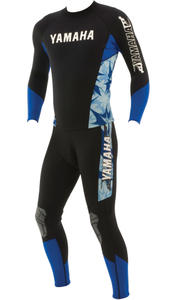
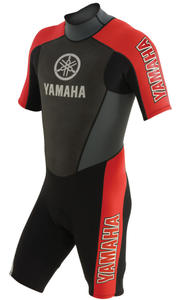
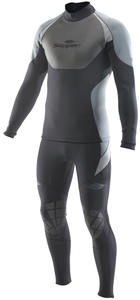
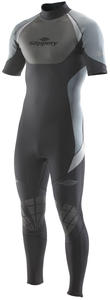
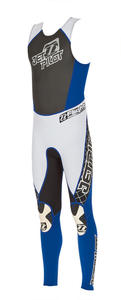
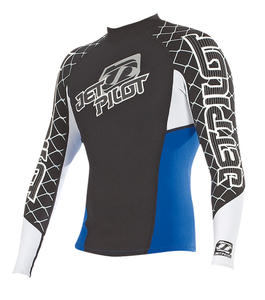









 Your Privacy Choices
Your Privacy Choices